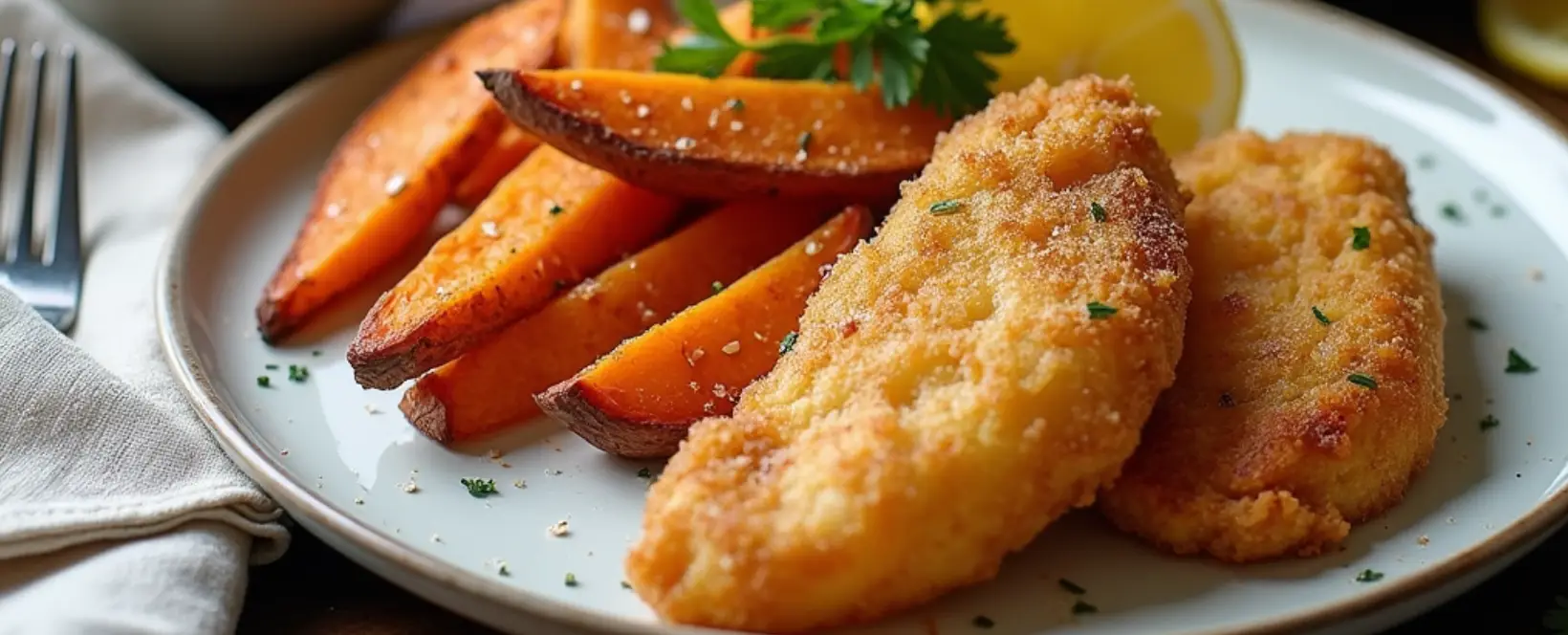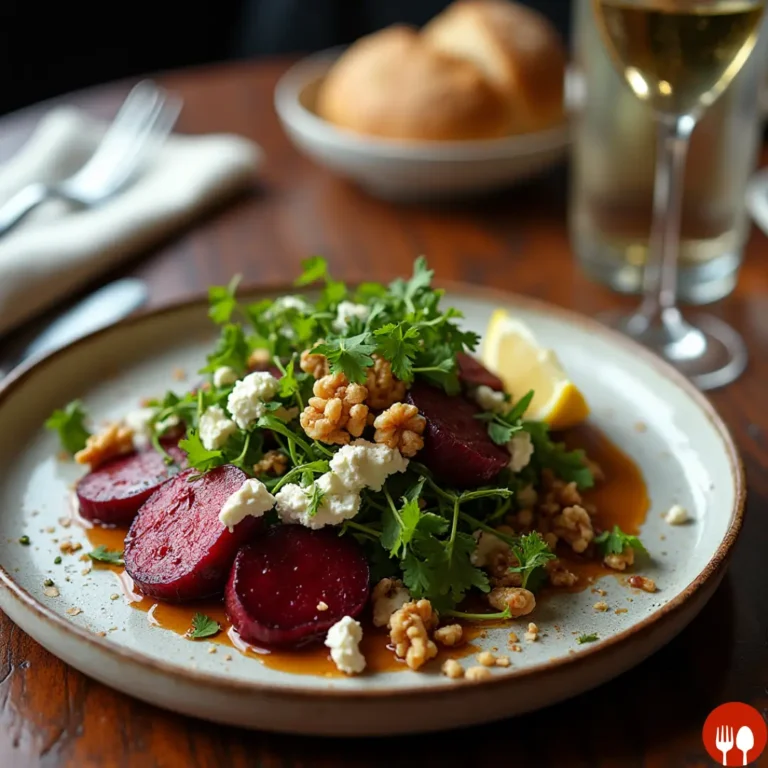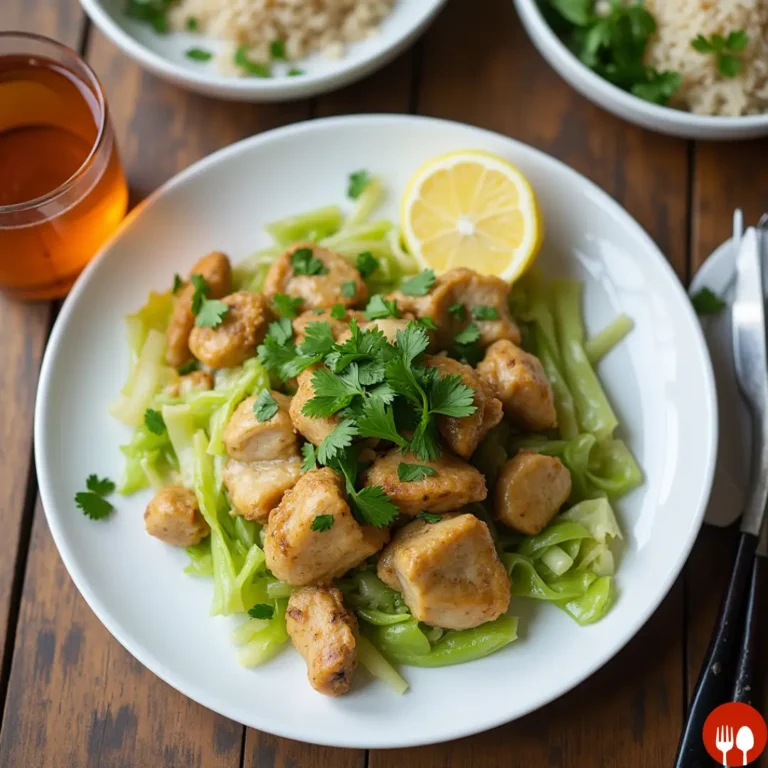Lectin-Free Fish and Chips: A Guilt-Free Take on a Timeless Dish
Rediscovering Comfort Food Without Compromise
There’s something universally comforting about biting into golden, crispy fish paired with perfectly seasoned chips. It’s a classic dish that conjures memories of seaside vacations, family dinners, and pure indulgence. But if you’re following a lectin-free lifestyle, enjoying this beloved favorite might seem like an impossible dream. Here’s the good news: you can savor the same incredible flavors while staying true to your health goals. This lectin-free fish and chips recipe offers a modern, guilt-free twist on a timeless dish, ensuring that you never feel deprived.

Table of Contents
The Origins of Fish and Chips: A Timeless Favorite
Why We Love Fish and Chips
Fish and chips are more than just a meal; they’re a cultural icon. Originating in the UK during the 19th century, this dish quickly became a staple for its simplicity, affordability, and unmatched flavor. Today, it’s enjoyed worldwide, with each region adding its unique flair to the recipe. Whether served wrapped in newspaper or on a fancy plate, its universal appeal lies in its satisfying crunch and hearty taste.
The Challenge with Traditional Recipes
Traditional fish and chips rely heavily on wheat-based batters and oils that can be heavy on your stomach and health. These ingredients are often laden with lectins—a type of protein that can contribute to digestive discomfort and inflammation for some people. Additionally, the frying process often involves unhealthy trans fats, making the dish less than ideal for a health-conscious diet.
What Makes This Recipe Lectin-Free and Healthy
The Key Ingredients That Set It Apart
By replacing traditional components with lectin-free alternatives, this recipe transforms fish and chips into a nourishing meal that aligns with your health objectives. Here’s what makes it special:
- Almond Flour and Arrowroot Starch: These lectin-free substitutes create a crispy, golden coating that rivals any wheat-based batter.
- Coconut or Avocado Oil: These oils are stable at high temperatures and offer health benefits, including heart-healthy fats.
- Fresh, Wild-Caught Fish: Rich in omega-3 fatty acids, wild-caught options like cod or haddock bring superior nutrition to the table.
Health Benefits of Going Lectin-Free
Choosing lectin-free meals isn’t just about avoiding discomfort. It’s about embracing a lifestyle that can:
- Enhance Digestive Health: By eliminating lectins, you reduce potential irritants to your gut.
- Reduce Inflammation: Many people report fewer inflammatory symptoms after cutting out lectins.
- Support Weight Management: With cleaner, nutrient-dense ingredients, it’s easier to maintain a healthy weight.
Step-by-Step: How to Make Lectin-Free Fish and Chips
Ingredients
Here’s everything you need to get started:
| Ingredient | Quantity | Notes |
|---|---|---|
| Wild-caught white fish | 2 fillets | Cod or haddock works best |
| Almond flour | 1 cup | For a crispy, golden coating |
| Arrowroot starch | 2 tablespoons | Helps the batter stick |
| Eggs | 2 large | Beaten for the coating process |
| Coconut oil | 1 cup | For frying |
| Sweet potatoes | 2 large | For healthier, lectin-free chips |
| Sea salt | To taste | Enhances flavor |
| Black pepper | To taste | Adds a slight kick |

Instructions
- Prepare the Fish:
- Begin by patting your fish fillets dry with a paper towel. Season them lightly with sea salt and black pepper.
- Set up a coating station with three bowls: one with beaten eggs, another with almond flour mixed with arrowroot starch, and the last one empty for the coated fish.
- Dip each fillet into the egg mixture, ensuring it’s fully coated, then roll it in the almond flour mixture until evenly covered.
- Fry the Fish:
- Heat coconut oil in a skillet over medium-high heat. Ensure the oil is hot enough by dropping a small amount of batter into the pan—it should sizzle immediately.
- Gently place the coated fish fillets into the skillet, frying each side for 3-4 minutes until golden brown and cooked through.
- Transfer the fish to a wire rack to drain excess oil and maintain crispiness.
- Make the Chips:
- Slice sweet potatoes into thick wedges and toss them in a small amount of coconut oil, sea salt, and black pepper.
- Arrange the wedges on a baking sheet lined with parchment paper and bake at 425°F (220°C) for 25-30 minutes, flipping halfway through for even crisping.

Pro Tips for Perfect Results
- Avoid overcrowding the skillet to ensure even frying.
- Use a food thermometer to maintain oil temperature around 350°F for optimal results.
- Serve immediately for the best texture and flavor.
Pairing Suggestions and Serving Ideas
Homemade Dips
Elevate your meal with these delicious, easy-to-make dips:
- Tartar Sauce: Combine Greek yogurt, chopped pickles, fresh dill, and a squeeze of lemon juice.
- Spicy Avocado Mayo: Blend ripe avocado, lime juice, and a touch of hot sauce for a creamy kick.
Perfect Sides
Round out your plate with these complementary additions:
- A refreshing green salad with arugula, cucumber, and a light vinaigrette.
- Steamed broccoli or asparagus for added nutrients.
FAQ: Your Questions About Lectin-Free Fish and Chips Answered
Can I use other fish varieties?
Absolutely! While cod and haddock are traditional choices, salmon, tilapia, or even halibut work wonderfully in this recipe.
Is this recipe keto-friendly?
Yes! Thanks to the almond flour and low-carb ingredients, this recipe is perfect for those following a keto diet.
How do I store leftovers?
Store any leftovers in an airtight container in the fridge for up to two days. To reheat, use an oven or air fryer to maintain crispiness—avoid microwaving, as it can make the coating soggy.
Can I make this recipe ahead of time?
While it’s best enjoyed fresh, you can prep the fish and sweet potatoes a few hours in advance. Keep them refrigerated until ready to cook.
Indulge Without Compromise
You no longer need to choose between satisfying your cravings and maintaining a healthy lifestyle. This lectin-free fish and chips recipe delivers all the crunch and flavor you love, without the guilt. By using clean, wholesome ingredients, you’re treating your body to a nourishing meal that feels indulgent yet supports your well-being.
So, what are you waiting for? Grab your apron, and let’s get cooking! Once you try this recipe, you’ll wonder why you ever settled for the traditional version.
Share Your Experience!
Have you tried this recipe? We’d love to hear from you! Share your feedback, tips, and creative variations in the comments below. Don’t forget to spread the joy by sharing this recipe with your friends and family—because everyone deserves a guilt-free take on a timeless dish.
For more lunch recipes click here








One Comment
Comments are closed.